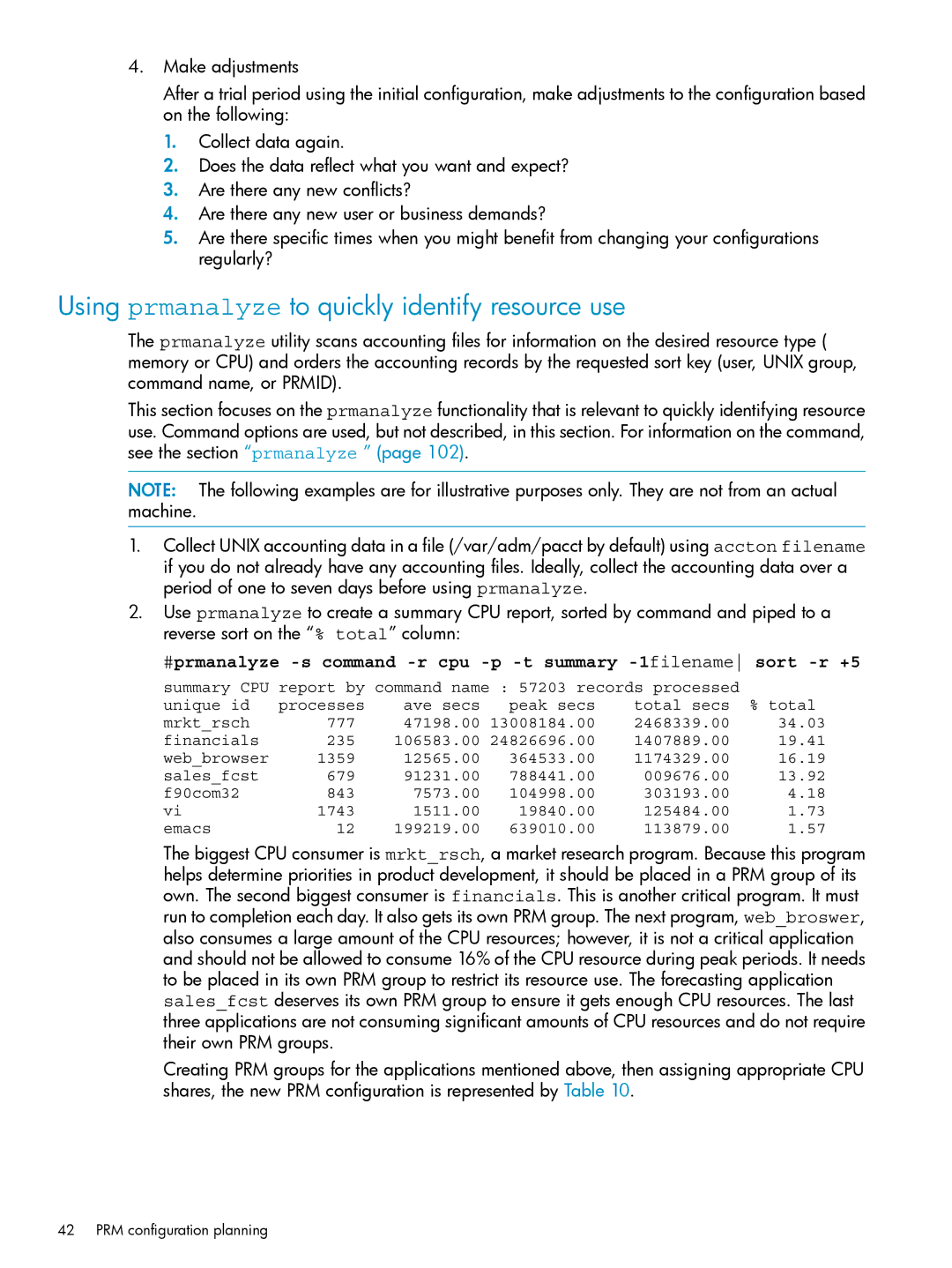4.Make adjustments
After a trial period using the initial configuration, make adjustments to the configuration based on the following:
1.Collect data again.
2.Does the data reflect what you want and expect?
3.Are there any new conflicts?
4.Are there any new user or business demands?
5.Are there specific times when you might benefit from changing your configurations regularly?
Using prmanalyze to quickly identify resource use
The prmanalyze utility scans accounting files for information on the desired resource type ( memory or CPU) and orders the accounting records by the requested sort key (user, UNIX group, command name, or PRMID).
This section focuses on the prmanalyze functionality that is relevant to quickly identifying resource use. Command options are used, but not described, in this section. For information on the command, see the section “prmanalyze ” (page 102).
NOTE: The following examples are for illustrative purposes only. They are not from an actual machine.
1.Collect UNIX accounting data in a file (/var/adm/pacct by default) using accton filename if you do not already have any accounting files. Ideally, collect the accounting data over a period of one to seven days before using prmanalyze.
2.Use prmanalyze to create a summary CPU report, sorted by command and piped to a reverse sort on the “% total” column:
#prmanalyze
summary CPU report by command name : 57203 records processed |
| ||||
unique id | processes | ave secs | peak secs | total secs | % total |
mrkt_rsch | 777 | 47198.00 | 13008184.00 | 2468339.00 | 34.03 |
financials | 235 | 106583.00 | 24826696.00 | 1407889.00 | 19.41 |
web_browser | 1359 | 12565.00 | 364533.00 | 1174329.00 | 16.19 |
sales_fcst | 679 | 91231.00 | 788441.00 | 009676.00 | 13.92 |
f90com32 | 843 | 7573.00 | 104998.00 | 303193.00 | 4.18 |
vi | 1743 | 1511.00 | 19840.00 | 125484.00 | 1.73 |
emacs | 12 | 199219.00 | 639010.00 | 113879.00 | 1.57 |
The biggest CPU consumer is mrkt_rsch, a market research program. Because this program helps determine priorities in product development, it should be placed in a PRM group of its own. The second biggest consumer is financials. This is another critical program. It must run to completion each day. It also gets its own PRM group. The next program, web_broswer, also consumes a large amount of the CPU resources; however, it is not a critical application and should not be allowed to consume 16% of the CPU resource during peak periods. It needs to be placed in its own PRM group to restrict its resource use. The forecasting application sales_fcst deserves its own PRM group to ensure it gets enough CPU resources. The last three applications are not consuming significant amounts of CPU resources and do not require their own PRM groups.
Creating PRM groups for the applications mentioned above, then assigning appropriate CPU shares, the new PRM configuration is represented by Table 10.
42 PRM configuration planning
